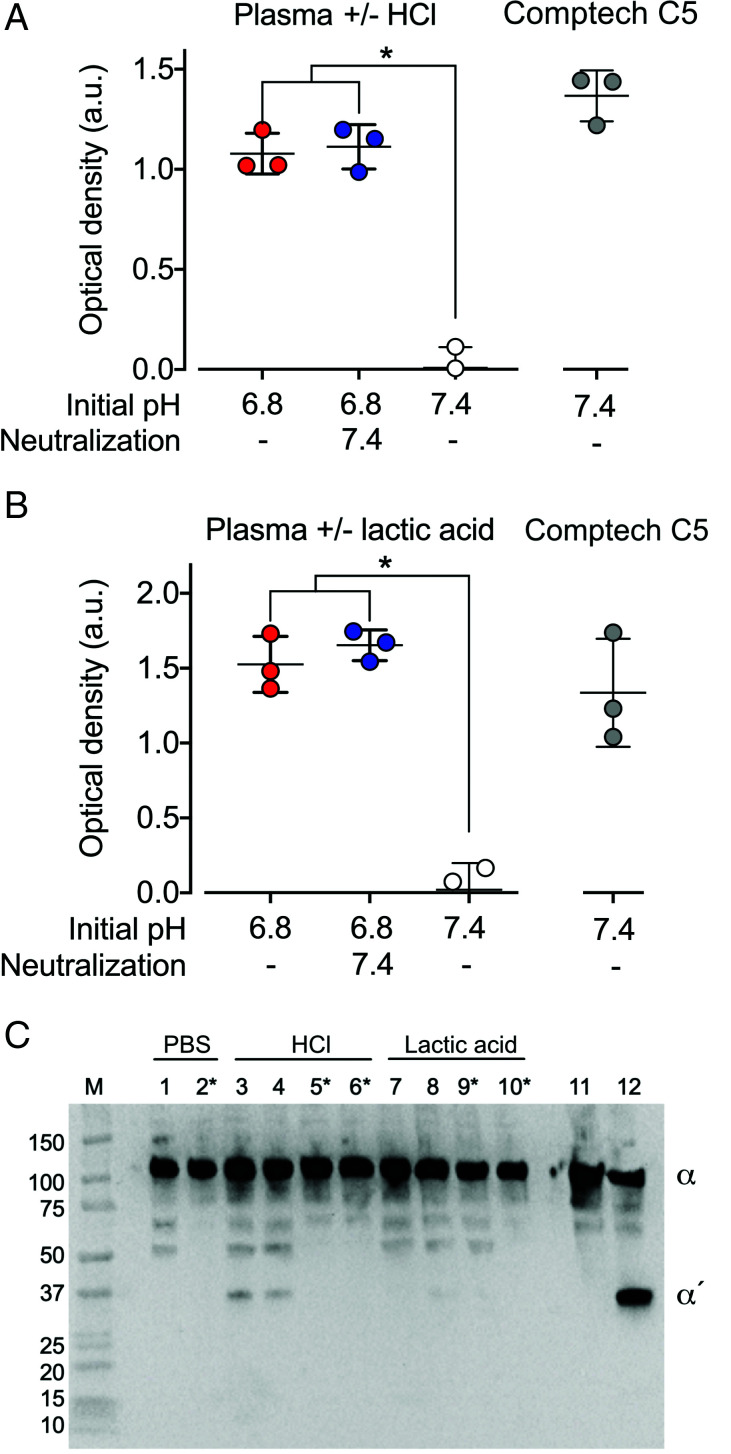FIGURE 6.
C5a Ag exposure and C5 cleavage in hydrochloric acid– and lactic acid–acidified GPRP-plasma. (A and B) Conformationally selective ELISA for the detection of C5a neoepitope of C5 in normal GPRP-plasma (pH 7.4) and plasma acidified to pH 6.8 with hydrochloric acid (HCl) (A) or lactic acid (B), with or without neutralization to pH 7.4 with NaOH 1 min after acidification. Exposure of the C5a neoepitope in C5 was detected by ELISA, combining capturing and detecting Abs specific for the C5a neoepitope and C5b, respectively. Purified C5 (Comptech) at 60 μg/ml was included as a control. Data are shown as the optical density mean values ± SD (n = 3), *p < 0.001. (C) GPRP-plasma with and without lepirudin was pH-adjusted to 6.8 with hydrochloric acid (HCl) or lactic acid, with or without neutralization to pH 7.4 with NaOH 1 min after acidification. All samples, including GPRP-plasma, were kept at 7.4, and purified C5 with thrombin (400 nM) +/− lepirudin were incubated for 1 h at 37°C. C5a-containing fragments were specifically enriched by immunoprecipitation using a mAb against C5a (clone 137-26) and detected by Western blot, under reduced conditions, using a polyclonal Ab against C5a. Samples, as indicated on top of the membrane, are GPRP-plasma pH 7.4 (lanes 1 and 2), GPRP-plasma acidified to pH 6.8 with either hydrochloric acid (HCl) (lanes 3–6) or with lactic acid (lanes 7–10). Samples in lanes 4, 6, 8, and 10 are neutralized to pH 7.4 with NaOH after acidification. It is indicated which samples contain lepirudin. Intact and cleaved C5 α-chain are indicated by α and α′, respectively, on the representative Western blot from three replicates. M, m.w. markers with size indicated in kDa.

